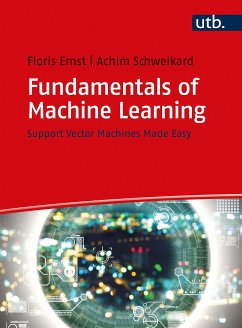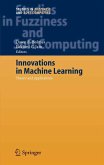Artificial intelligence will change our lives forever - both at work and in our private lives. But how exactly does machine learning work? Two professors from Lübeck explore this question. In their English textbook they teach the necessary basics for the use of Support Vector Machines, for example, by explaining linear programming, the Lagrange multiplier, kernels and the SMO algorithm. They also deal with neural networks, evolutionary algorithms and Bayesian networks. Definitions are highlighted in the book and tasks invite readers to actively participate. The textbook is aimed at students of computer science, engineering and natural sciences, especially in the fields of robotics, artificial intelligence and mathematics.
Dieser Download kann aus rechtlichen Gründen nur mit Rechnungsadresse in A, B, BG, CY, CZ, D, DK, EW, E, FIN, F, GR, HR, H, IRL, I, LT, L, LR, M, NL, PL, P, R, S, SLO, SK ausgeliefert werden.









